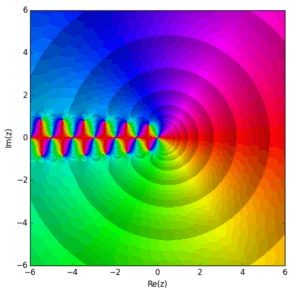Trigamma function

In mathematics, the trigamma function, denoted , is the second of the polygamma functions, and is defined by
- .
It follows from this definition that
where is the digamma function. It may also be defined as the sum of the series
making it a special case of the Hurwitz zeta function
Note that the last two formulæ are valid when is not a natural number.
Calculation
A double integral representation, as an alternative to the ones given above, may be derived from the series representation:
using the formula for the sum of a geometric series. Integration by parts yields:
An asymptotic expansion as a Laurent series is
if we have chosen , i.e. the Bernoulli numbers of the second kind.
Recurrence and reflection formulae
The trigamma function satisfies the recurrence relation
and the reflection formula
which immediately gives the value for z=1/2.
Special values
The trigamma function has the following special values:
where G represents Catalan's constant.
There are no roots on the real axis of , but there exist infinitely many pairs of roots for . Each such pair of root approach quickly and their imaginary part increases slowly logarithmic with n. E.g. and are the first two roots with .
Appearance
The trigamma function appears in the next surprising sum formula:[1]
See also
Notes
- ↑ Mező, István (2013). "Some infinite sums arising from the Weierstrass Product Theorem". Applied Mathematics and Computation. 219: 9838–9846. doi:10.1016/j.amc.2013.03.122.
References
- Milton Abramowitz and Irene A. Stegun, Handbook of Mathematical Functions, (1964) Dover Publications, New York. ISBN 0-486-61272-4. See section §6.4
- Eric W. Weisstein. Trigamma Function -- from MathWorld--A Wolfram Web Resource